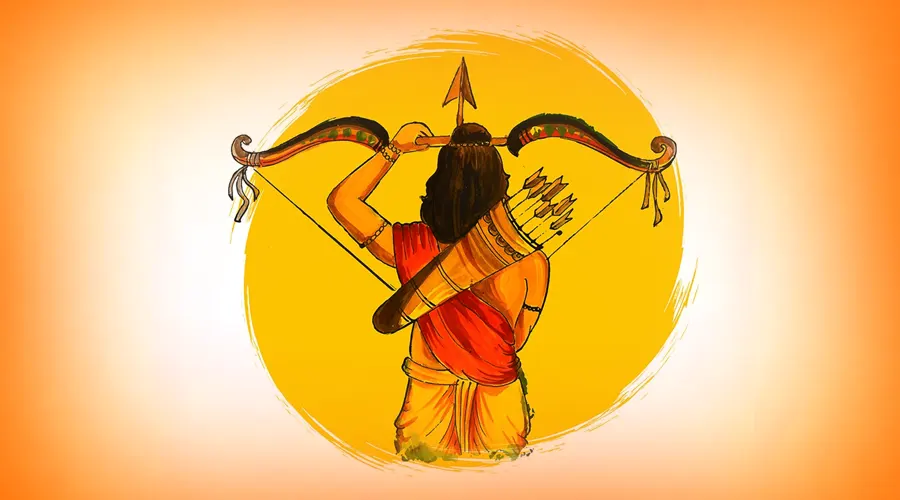Dussehra 2023: When is Dussehra?
Dussehra or Vijay Dashmi is a festival celebrated by the Hindus that commemorates the victorious triumph of Lord Rama over the King of Lanka, the ten-headed demon king, Ravana after he abducted Goddess Sita. This festival is celebrated on the tenth day of the month of Ashvina, according to the Hindu Panchang. This year, the festival of Rama’s victory will be celebrated on the 24th of October with increased zeal and enthusiasm.
The name of this festival comes from two Sanskrit words- “dasha,” meaning ten, and “hara,” which means defeat. It is a day that celebrates the defeat of Ravana in the battle against Lord Rama, the king of Ayodhya. It is celebrated in the seventh month of Ashvina, on the day when the full moon appears in the sky.
The bright fortnight of Shukla Paksha also coincides with the nine-day festival of Navratri and the tenth day of Durga Puja, adding a lot more fervor to the celebrations. Furthermore, this day marks the beginning of the preparations for the biggest festival of the Hindus, Diwali which takes place 20 days after Dussehra.
According to the Hindu calendar, this day falls on the 10th day of the month of Ashvina which overlaps with September-October in the Gregorian calendar. In 2023, Dussehra will be observed on 24th October (Tuesday).
History of Dussehra
According to legends, Ravana abducted the wife of Lord Rama which led to a deadly war between them. Demonic King Ravana was given the boon of being indestructible by Lord Brahma. After several events, Rama managed to kill Ravana by shooting an arrow through his belly button. Therefore, the 10th day of Ashvina month of the Hindu calendar is celebrated as Dussehra, every year.
The ten heads of Ravana are since then symbolic of the ten vices of envy, pride, anger, false belief, greed, injustice, selfishness, arrogance, hatred, and ego. During this festival each year, the effigies of Ravana, alongside his partners in crime, Meghnath, and Kumbhkaran, are burnt to symbolize the burning away of these ten vices from our lives.
There’s one more legend behind this festival. According to Mahabharat, this day commemorates the victory of Arjuna who single-handedly defeated the entire Kaurava Army. Arjuna is also known as Vijaya and hence, the day he destroyed the army is referred to as the ‘Vijaya Dashami’.
Many people throughout the nation celebrate this day as an occasion to honour the victory of good over evil. Devotees in the Eastern parts of India observe this day as the end of Durga Puja which begins with the festival of Navratri.
Significance of Dussehra
Ravana was the king of Lanka. Despite being an extremely learned man, he was overtaken by pride, blinding him with the idea that he was all-powerful. He symbolizes the vice of ego. Lord Rama was the king of Ayodhya. He was the Maryada Purushottam, abiding by dharma and the ideals of morality in his life. He stands for Goodness.
This festival represents that constant struggle between the good and the bad that exists in every man at not only the physical but also the mental and emotional levels. When the divine or the spirit of the Lord enters our lives, the stronghold of ego weakens and gets destroyed. When an individual surrenders their soul to the Lord, they are overtaken by unconditional love. This love brings divine knowledge into the life of the devotee, symbolizing the victory of good over evil, just like Rama conquered Ravana.
Other names associated with Vijaya Dasami
- Dashahara
- Dussehra
- Dashain
- Navaratri
- Durgotsav
- Dasara
- Vishwakarma Diwas
Rituals of Dussehra-Vijaya Dashami
Many rituals are performed to commemorate the significance of this day. Let us take a look at some of the prominent rituals that make this festival so special:
Ramlila is an important feature of this festival, one that is eagerly awaited by both young and old. The story of Ramayana is brought to the stage as kids adorn costumes and perform the story of Rama’s victory over Ravana. Ramlila is performed in every locality on open grounds where hundreds of people gather to celebrate the triumph of Lord Rama.
Effigies of Ravana along with his son Meghnath and brother Kumbhkaran are traditionally burnt amidst fireworks. These effigies are built months in advance and filled with firecrackers that are a major attraction for children on this day of the festival.
Processions are taken out on the streets as kids dress up as Lord Rama, Goddess Sita, Laxman, and Lord Hanuman, blessing pedestrians with good health and prosperity.
In East India, Dussehra dates and time coincide with the finale of Durga Puja in the states of West Bengal and Odisha. On this day, the idols of Goddess Durga are taken to the nearest water bodies and immersed, performing the visarjan ceremony amidst much fanfare.
This day also coincides with Vidyarambam which is celebrated in the Southern states of the country like Kerala, Tamil Nadu, and Karnataka. On this day, devotees worship Goddess Saraswati, the goddess of wisdom. Alphabets are written on a plate full of raw rice from sacred books, initiating learning on this auspicious day.
Dussehra Celebrations across India
On this day, devotees wear new clothes and organize public festivities for commemorating the victory of good over evil in the northern parts of India. Celebrated as the conclusion of the nine-day-long fast of Navratri, Dussehra is observed by organizing a theatrical enactment of Rama’s life story which is called Ram Lila. Followed by which the effigies of Ravana, his son Meghanada and brother Kumbhakaran are set on fire in open fields throughout the nation.
People in the Eastern region of India including West Bengal, Bihar , and Odisha observe this day as the end of Durga Puja which is celebrated by wearing a red saree and putting on vermilion. It is observed as an emotional occasion and Bengalis sing folk songs while immersing the idols of Goddess Durga in water bodies.


Comments (0)